Graph Convolutional Neural Networks for Power Line Outage Identification

Auto-TLDR; Graph Convolutional Networks for Power Line Outage Identification
Similar papers
Revisiting Graph Neural Networks: Graph Filtering Perspective
Hoang Nguyen-Thai, Takanori Maehara, Tsuyoshi Murata

Auto-TLDR; Two-Layers Graph Convolutional Network with Graph Filters Neural Network
Abstract Slides Poster Similar
Kernel-based Graph Convolutional Networks

Auto-TLDR; Spatial Graph Convolutional Networks in Recurrent Kernel Hilbert Space
Abstract Slides Poster Similar
Learning Connectivity with Graph Convolutional Networks

Auto-TLDR; Learning Graph Convolutional Networks Using Topological Properties of Graphs
Abstract Slides Poster Similar
Multi-Graph Convolutional Network for Relationship-Driven Stock Movement Prediction
Jiexia Ye, Juanjuan Zhao, Kejiang Ye, Cheng-Zhong Xu
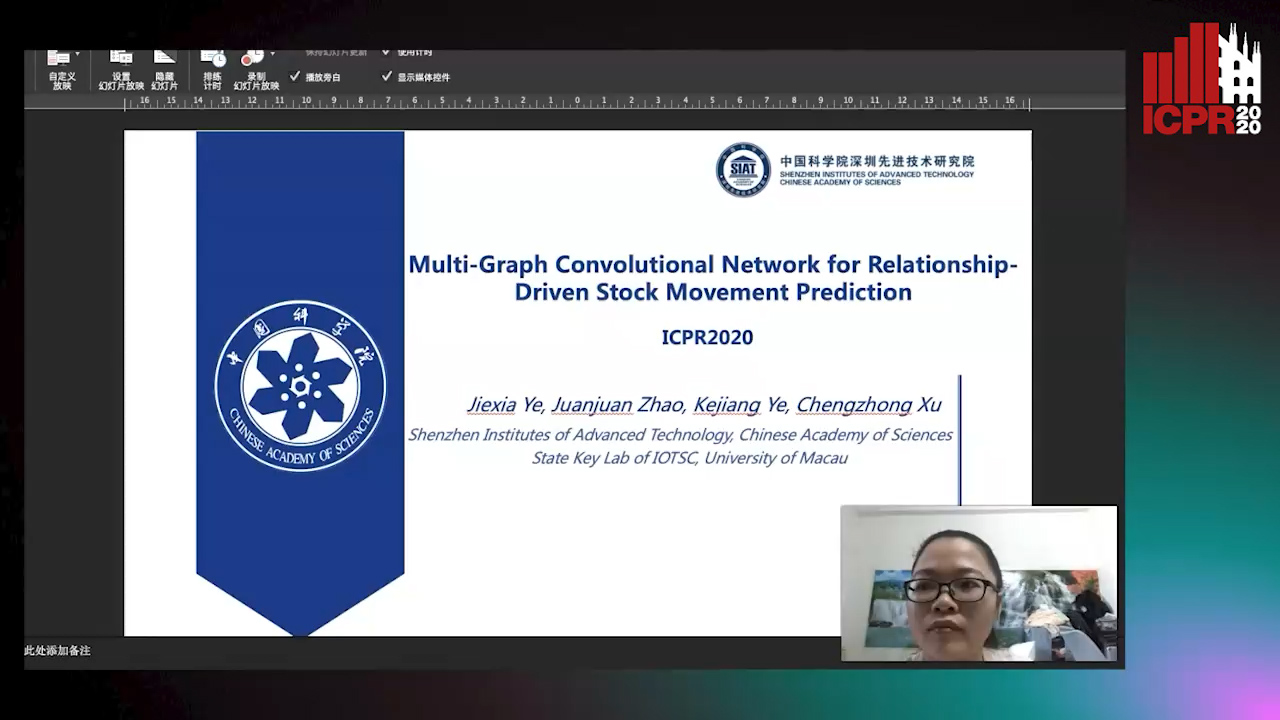
Auto-TLDR; Multi-GCGRU: A Deep Learning Framework for Stock Price Prediction with Cross Effect
Abstract Slides Poster Similar
AOAM: Automatic Optimization of Adjacency Matrix for Graph Convolutional Network
Yuhang Zhang, Hongshuai Ren, Jiexia Ye, Xitong Gao, Yang Wang, Kejiang Ye, Cheng-Zhong Xu

Auto-TLDR; Adjacency Matrix for Graph Convolutional Network in Non-Euclidean Space
Abstract Slides Poster Similar
Edge-Aware Graph Attention Network for Ratio of Edge-User Estimation in Mobile Networks
Jiehui Deng, Sheng Wan, Xiang Wang, Enmei Tu, Xiaolin Huang, Jie Yang, Chen Gong

Auto-TLDR; EAGAT: Edge-Aware Graph Attention Network for Automatic REU Estimation in Mobile Networks
Abstract Slides Poster Similar
On the Global Self-attention Mechanism for Graph Convolutional Networks

Auto-TLDR; Global Self-Attention Mechanism for Graph Convolutional Networks
Constructing Geographic and Long-term Temporal Graph for Traffic Forecasting
Yiwen Sun, Yulu Wang, Kun Fu, Zheng Wang, Changshui Zhang, Jieping Ye

Auto-TLDR; GLT-GCRNN: Geographic and Long-term Temporal Graph Convolutional Recurrent Neural Network for Traffic Forecasting
Abstract Slides Poster Similar
Classification of Intestinal Gland Cell-Graphs Using Graph Neural Networks
Linda Studer, Jannis Wallau, Heather Dawson, Inti Zlobec, Andreas Fischer

Auto-TLDR; Graph Neural Networks for Classification of Dysplastic Gland Glands using Graph Neural Networks
Abstract Slides Poster Similar
Label Incorporated Graph Neural Networks for Text Classification
Yuan Xin, Linli Xu, Junliang Guo, Jiquan Li, Xin Sheng, Yuanyuan Zhou

Auto-TLDR; Graph Neural Networks for Semi-supervised Text Classification
Abstract Slides Poster Similar
Geographic-Semantic-Temporal Hypergraph Convolutional Network for Traffic Flow Prediction
Kesu Wang, Jing Chen, Shijie Liao, Jiaxin Hou, Qingyu Xiong

Auto-TLDR; Geographic-semantic-temporal convolutional network for traffic flow prediction
Transfer Learning with Graph Neural Networks for Short-Term Highway Traffic Forecasting
Tanwi Mallick, Prasanna Balaprakash, Eric Rask, Jane Macfarlane
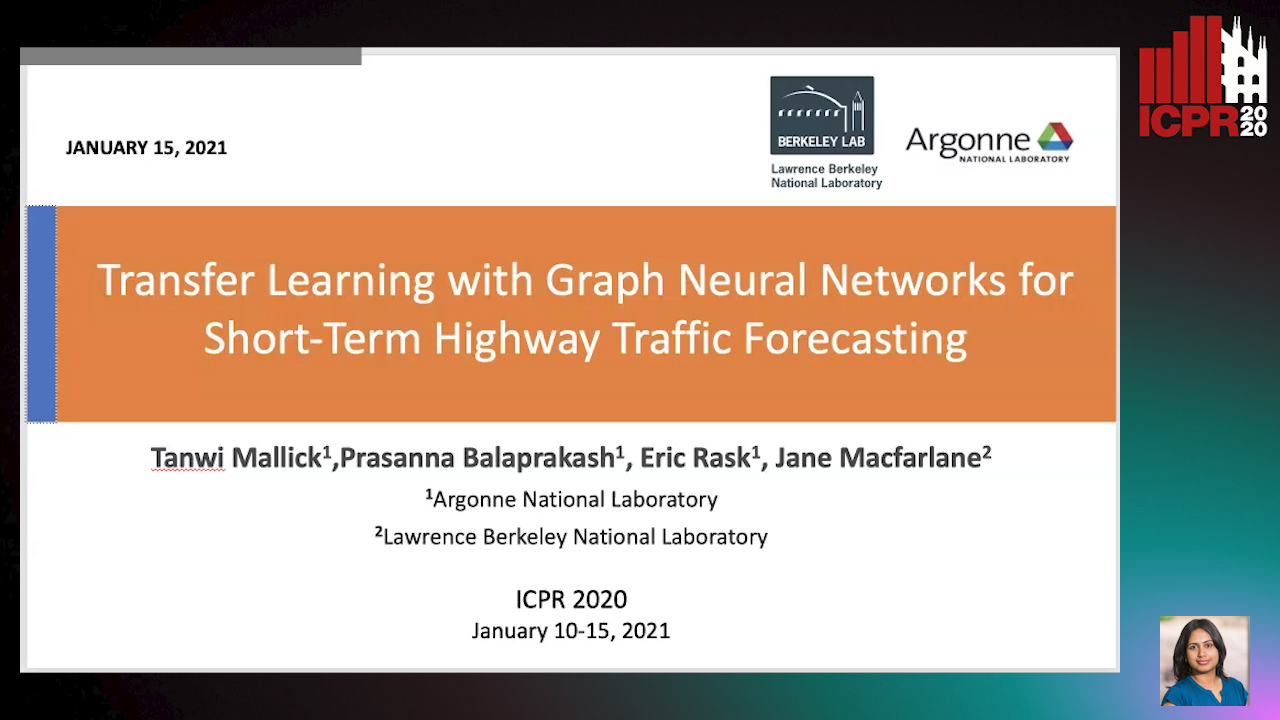
Auto-TLDR; Transfer Learning for Highway Traffic Forecasting on Unseen Traffic Networks
Abstract Slides Poster Similar
Region and Relations Based Multi Attention Network for Graph Classification
Manasvi Aggarwal, M. Narasimha Murty

Auto-TLDR; R2POOL: A Graph Pooling Layer for Non-euclidean Structures
Abstract Slides Poster Similar
GCNs-Based Context-Aware Short Text Similarity Model

Auto-TLDR; Context-Aware Graph Convolutional Network for Text Similarity
Abstract Slides Poster Similar
Temporal Attention-Augmented Graph Convolutional Network for Efficient Skeleton-Based Human Action Recognition
Negar Heidari, Alexandros Iosifidis

Auto-TLDR; Temporal Attention Module for Efficient Graph Convolutional Network-based Action Recognition
Abstract Slides Poster Similar
Trainable Spectrally Initializable Matrix Transformations in Convolutional Neural Networks
Michele Alberti, Angela Botros, Schuetz Narayan, Rolf Ingold, Marcus Liwicki, Mathias Seuret

Auto-TLDR; Trainable and Spectrally Initializable Matrix Transformations for Neural Networks
Abstract Slides Poster Similar
Object Detection Using Dual Graph Network
Shengjia Chen, Zhixin Li, Feicheng Huang, Canlong Zhang, Huifang Ma

Auto-TLDR; A Graph Convolutional Network for Object Detection with Key Relation Information
Improving Gravitational Wave Detection with 2D Convolutional Neural Networks
Siyu Fan, Yisen Wang, Yuan Luo, Alexander Michael Schmitt, Shenghua Yu

Auto-TLDR; Two-dimensional Convolutional Neural Networks for Gravitational Wave Detection from Time Series with Background Noise
DCT/IDCT Filter Design for Ultrasound Image Filtering
Barmak Honarvar Shakibaei Asli, Jan Flusser, Yifan Zhao, John Ahmet Erkoyuncu, Rajkumar Roy

Auto-TLDR; Finite impulse response digital filter using DCT-II and inverse DCT
Abstract Slides Poster Similar
GraphBGS: Background Subtraction Via Recovery of Graph Signals
Jhony Heriberto Giraldo Zuluaga, Thierry Bouwmans

Auto-TLDR; Graph BackGround Subtraction using Graph Signals
Abstract Slides Poster Similar
ESResNet: Environmental Sound Classification Based on Visual Domain Models
Andrey Guzhov, Federico Raue, Jörn Hees, Andreas Dengel

Auto-TLDR; Environmental Sound Classification with Short-Time Fourier Transform Spectrograms
Abstract Slides Poster Similar
Hybrid Network for End-To-End Text-Independent Speaker Identification
Wajdi Ghezaiel, Luc Brun, Olivier Lezoray

Auto-TLDR; Text-Independent Speaker Identification with Scattering Wavelet Network and Convolutional Neural Networks
Abstract Slides Poster Similar
Sketch-Based Community Detection Via Representative Node Sampling
Mahlagha Sedghi, Andre Beckus, George Atia

Auto-TLDR; Sketch-based Clustering of Community Detection Using a Small Sketch
Abstract Slides Poster Similar
Recurrent Graph Convolutional Networks for Skeleton-Based Action Recognition
Guangming Zhu, Lu Yang, Liang Zhang, Peiyi Shen, Juan Song

Auto-TLDR; Recurrent Graph Convolutional Network for Human Action Recognition
Abstract Slides Poster Similar
The Application of Capsule Neural Network Based CNN for Speech Emotion Recognition
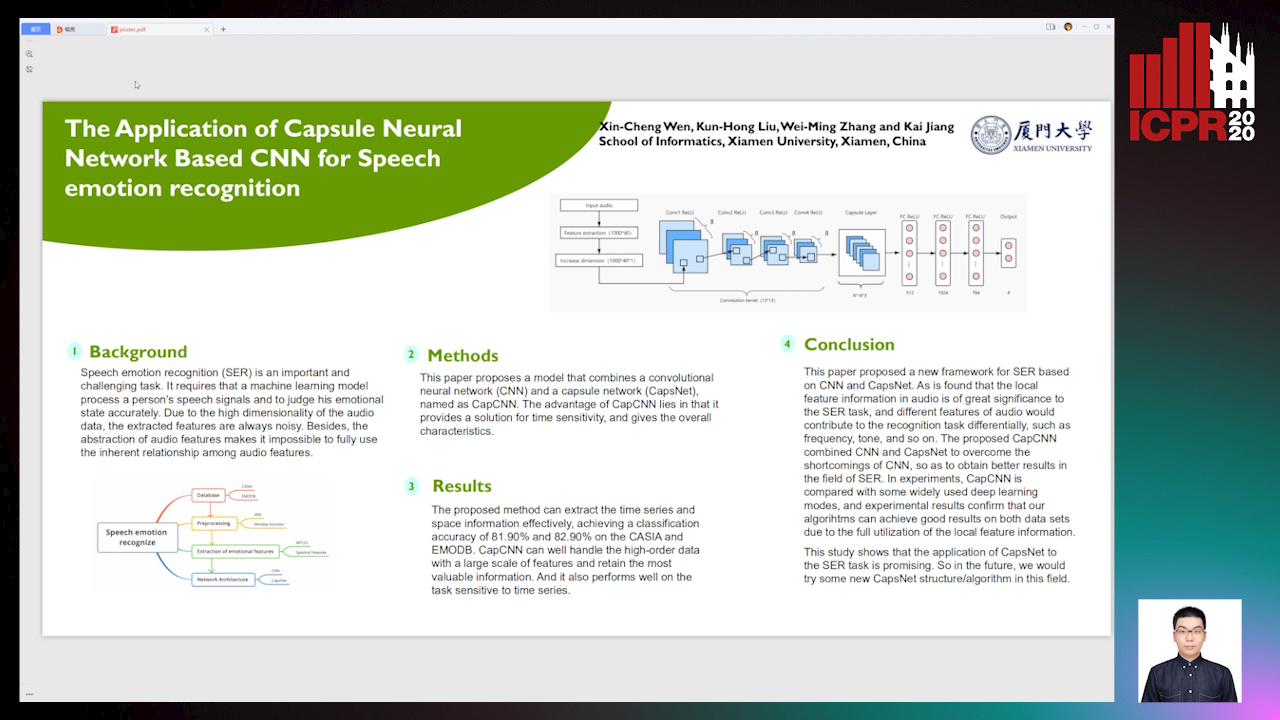
Auto-TLDR; CapCNN: A Capsule Neural Network for Speech Emotion Recognition
Abstract Slides Poster Similar
2D Discrete Mirror Transform for Image Non-Linear Approximation
Alessandro Gnutti, Fabrizio Guerrini, Riccardo Leonardi
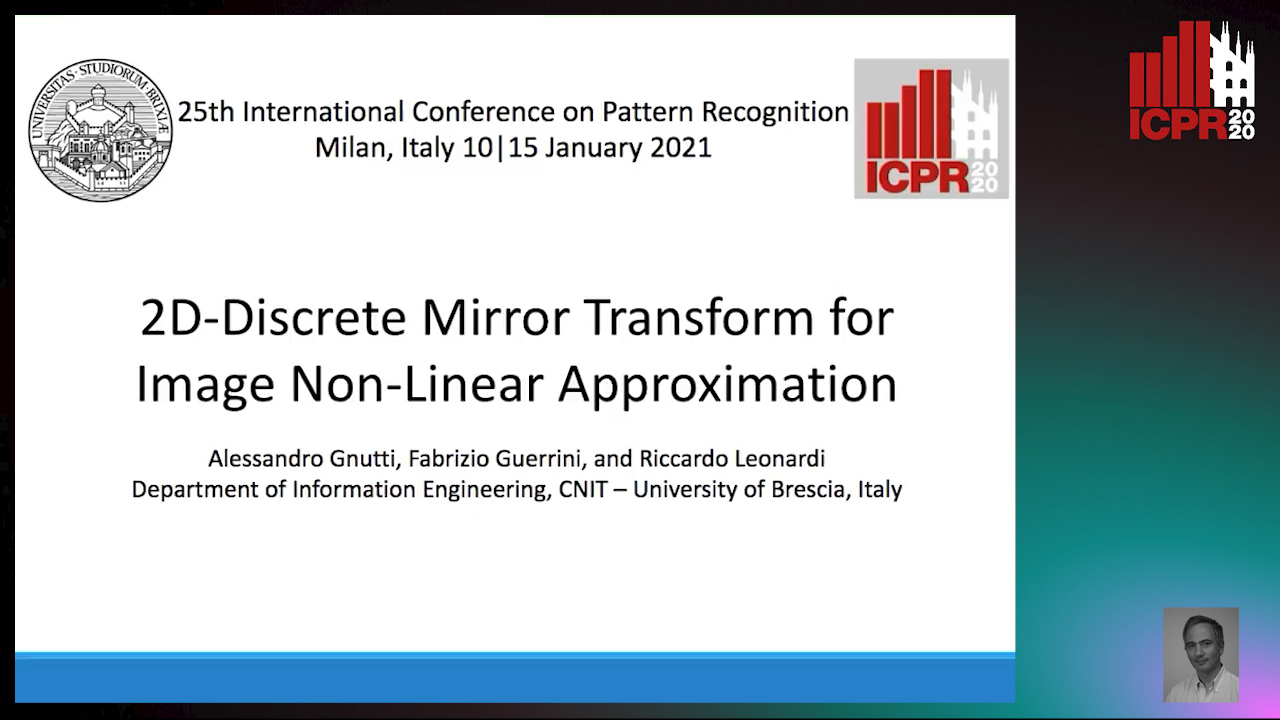
Auto-TLDR; Discrete Mirror Transform (DMT)
Abstract Slides Poster Similar
PICK: Processing Key Information Extraction from Documents Using Improved Graph Learning-Convolutional Networks
Wenwen Yu, Ning Lu, Xianbiao Qi, Ping Gong, Rong Xiao

Auto-TLDR; PICK: A Graph Learning Framework for Key Information Extraction from Documents
Abstract Slides Poster Similar
Graph-Based Interpolation of Feature Vectors for Accurate Few-Shot Classification
Yuqing Hu, Vincent Gripon, Stéphane Pateux

Auto-TLDR; Transductive Learning for Few-Shot Classification using Graph Neural Networks
Abstract Slides Poster Similar
Channel-Wise Dense Connection Graph Convolutional Network for Skeleton-Based Action Recognition
Michael Lao Banteng, Zhiyong Wu

Auto-TLDR; Two-stream channel-wise dense connection GCN for human action recognition
Abstract Slides Poster Similar
A General Model for Learning Node and Graph Representations Jointly

Auto-TLDR; Joint Community Detection/Dynamic Routing for Graph Classification
Abstract Slides Poster Similar
Siamese Graph Convolution Network for Face Sketch Recognition
Liang Fan, Xianfang Sun, Paul Rosin

Auto-TLDR; A novel Siamese graph convolution network for face sketch recognition
Abstract Slides Poster Similar
DenseRecognition of Spoken Languages
Jaybrata Chakraborty, Bappaditya Chakraborty, Ujjwal Bhattacharya
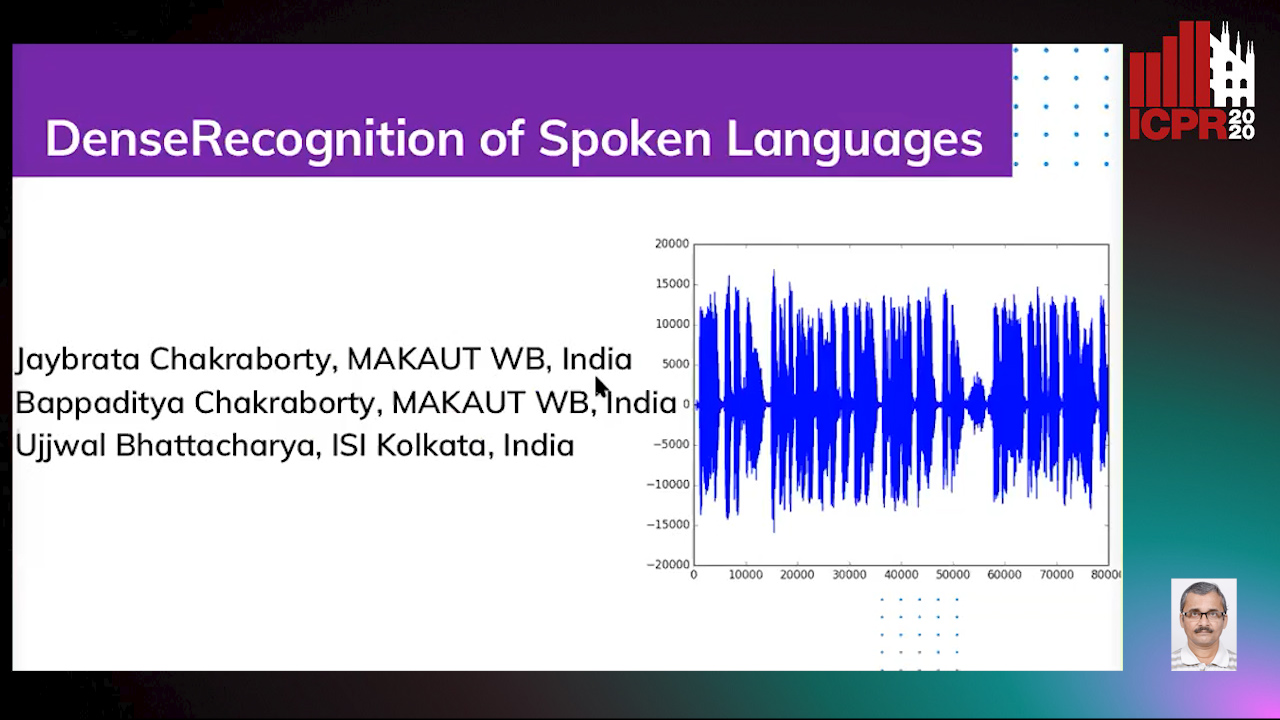
Auto-TLDR; DenseNet: A Dense Convolutional Network Architecture for Speech Recognition in Indian Languages
Abstract Slides Poster Similar
On Morphological Hierarchies for Image Sequences
Caglayan Tuna, Alain Giros, François Merciol, Sébastien Lefèvre

Auto-TLDR; Comparison of Hierarchies for Image Sequences
Abstract Slides Poster Similar
AdaFilter: Adaptive Filter Design with Local Image Basis Decomposition for Optimizing Image Recognition Preprocessing
Aiga Suzuki, Keiichi Ito, Takahide Ibe, Nobuyuki Otsu
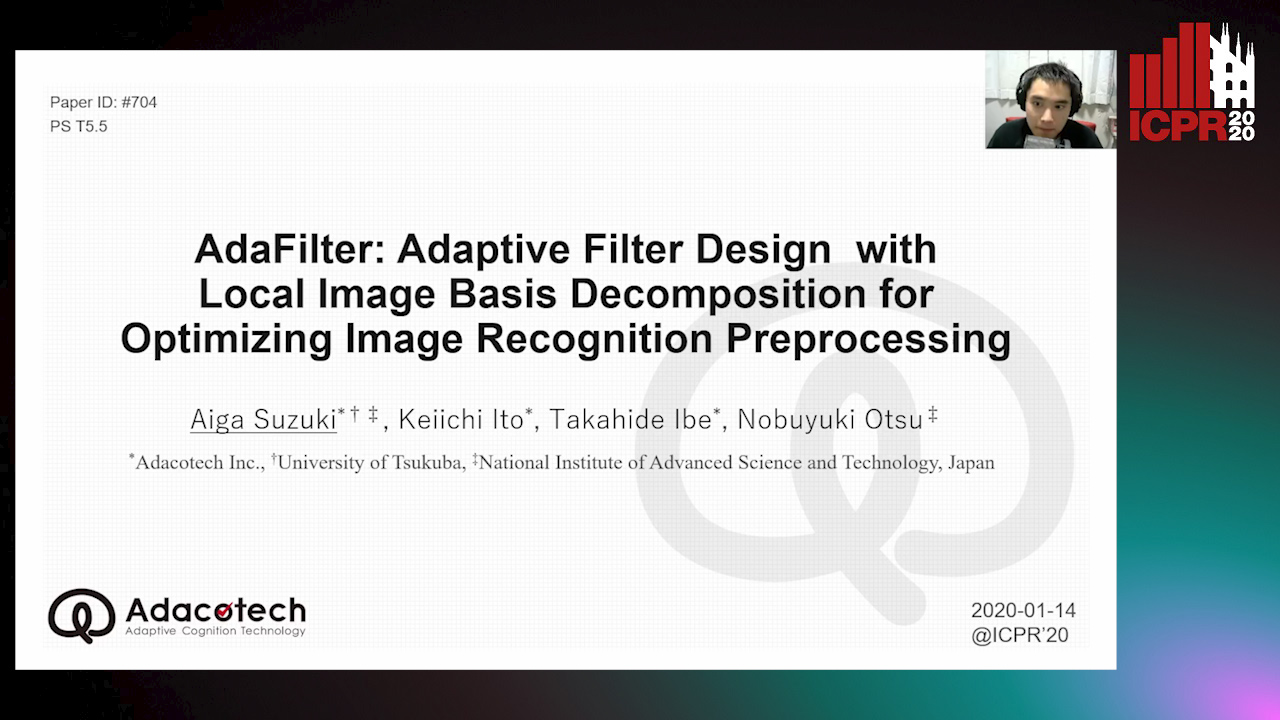
Auto-TLDR; Optimal Preprocessing Filtering for Pattern Recognition Using Higher-Order Local Auto-Correlation
Abstract Slides Poster Similar
Zero-Shot Text Classification with Semantically Extended Graph Convolutional Network
Tengfei Liu, Yongli Hu, Junbin Gao, Yanfeng Sun, Baocai Yin

Auto-TLDR; Semantically Extended Graph Convolutional Network for Zero-shot Text Classification
Abstract Slides Poster Similar
Social Network Analysis Using Knowledge-Graph Embeddings and Convolution Operations
Bonaventure Chidube Molokwu, Shaon Bhatta Shuvo, Ziad Kobti, Narayan C. Kar
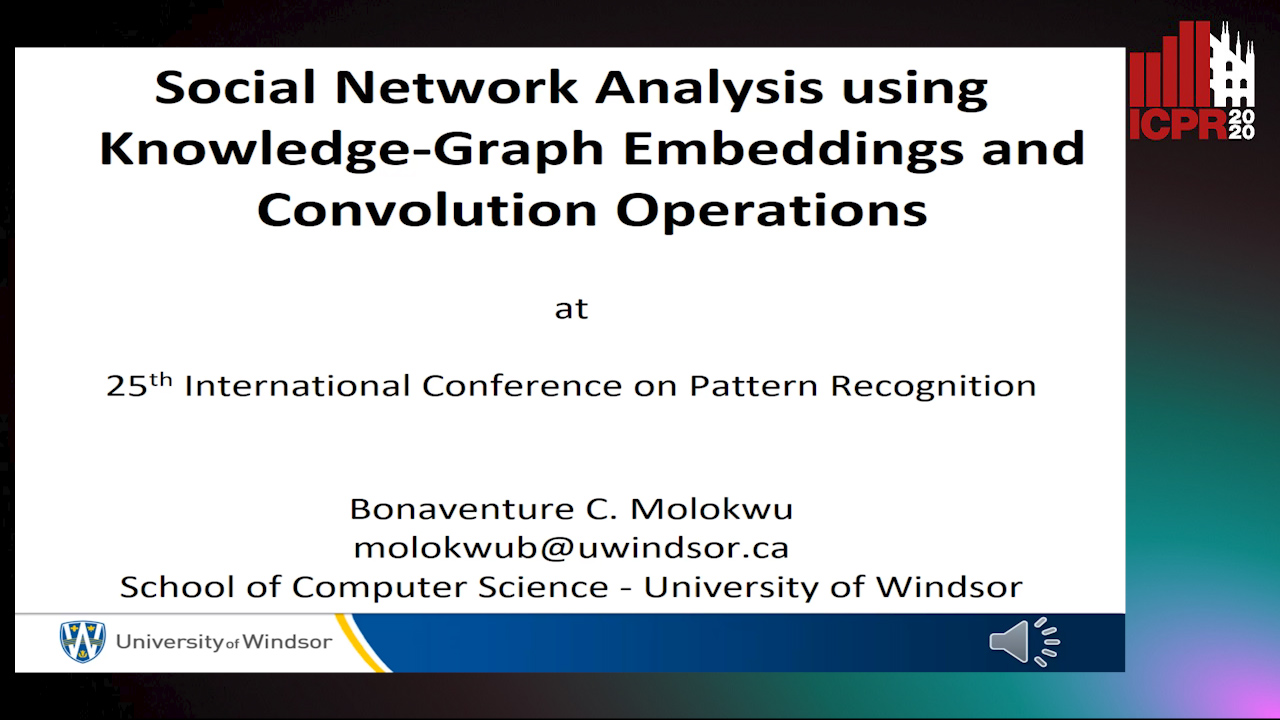
Auto-TLDR; RLVECO: Representation Learning via Knowledge- Graph Embeddings and Convolution Operations for Social Network Analysis
Abstract Slides Poster Similar
Wireless Localisation in WiFi Using Novel Deep Architectures
Peizheng Li, Han Cui, Aftab Khan, Usman Raza, Robert Piechocki, Angela Doufexi, Tim Farnham

Auto-TLDR; Deep Neural Network for Indoor Localisation of WiFi Devices in Indoor Environments
Abstract Slides Poster Similar
Epileptic Seizure Prediction: A Semi-Dilated Convolutional Neural Network Architecture
Ramy Hussein, Rabab K. Ward, Soojin Lee, Martin Mckeown
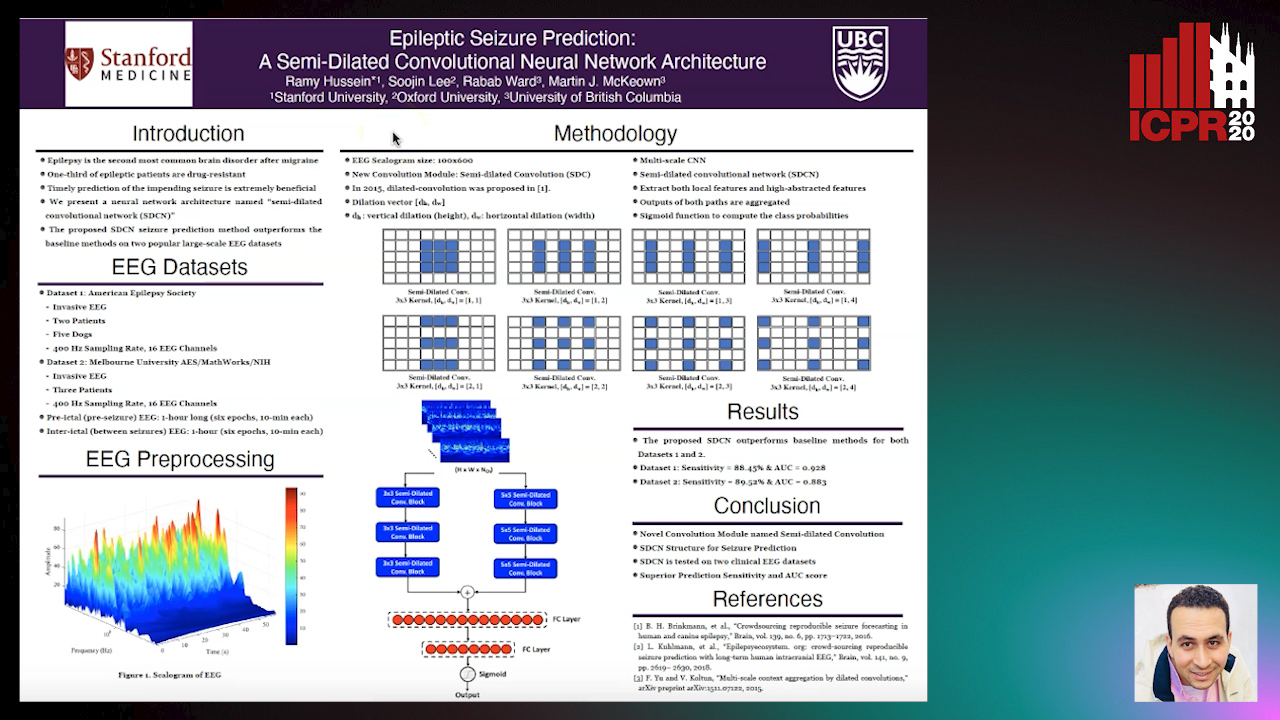
Auto-TLDR; Semi-Dilated Convolutional Network for Seizure Prediction using EEG Scalograms
More Correlations Better Performance: Fully Associative Networks for Multi-Label Image Classification

Auto-TLDR; Fully Associative Network for Fully Exploiting Correlation Information in Multi-Label Classification
Abstract Slides Poster Similar
Hcore-Init: Neural Network Initialization Based on Graph Degeneracy
Stratis Limnios, George Dasoulas, Dimitrios Thilikos, Michalis Vazirgiannis

Auto-TLDR; K-hypercore: Graph Mining for Deep Neural Networks
Abstract Slides Poster Similar
What Nodes Vote To? Graph Classification without Readout Phase
Yuxing Tian, Zheng Liu, Weiding Liu, Zeyu Zhang, Yanwen Qu

Auto-TLDR; node voting based graph classification with convolutional operator
Abstract Slides Poster Similar
Vertex Feature Encoding and Hierarchical Temporal Modeling in a Spatio-Temporal Graph Convolutional Network for Action Recognition
Konstantinos Papadopoulos, Enjie Ghorbel, Djamila Aouada, Bjorn Ottersten

Auto-TLDR; Spatio-Temporal Graph Convolutional Network for Skeleton-Based Action Recognition
Abstract Slides Poster Similar
Space-Time Domain Tensor Neural Networks: An Application on Human Pose Classification
Konstantinos Makantasis, Athanasios Voulodimos, Anastasios Doulamis, Nikolaos Doulamis, Nikolaos Bakalos

Auto-TLDR; Tensor-Based Neural Network for Spatiotemporal Pose Classifiaction using Three-Dimensional Skeleton Data
Abstract Slides Poster Similar
Directional Graph Networks with Hard Weight Assignments
Miguel Dominguez, Raymond Ptucha

Auto-TLDR; Hard Directional Graph Networks for Point Cloud Analysis
Abstract Slides Poster Similar
Equation Attention Relationship Network (EARN) : A Geometric Deep Metric Framework for Learning Similar Math Expression Embedding
Saleem Ahmed, Kenny Davila, Srirangaraj Setlur, Venu Govindaraju

Auto-TLDR; Representational Learning for Similarity Based Retrieval of Mathematical Expressions
Abstract Slides Poster Similar
Map-Based Temporally Consistent Geolocalization through Learning Motion Trajectories

Auto-TLDR; Exploiting Motion Trajectories for Geolocalization of Object on Topological Map using Recurrent Neural Network
Abstract Slides Poster Similar
Self-Supervised Learning with Graph Neural Networks for Region of Interest Retrieval in Histopathology
Yigit Ozen, Selim Aksoy, Kemal Kosemehmetoglu, Sevgen Onder, Aysegul Uner

Auto-TLDR; Self-supervised Contrastive Learning for Deep Representation Learning of Histopathology Images
Abstract Slides Poster Similar
TreeRNN: Topology-Preserving Deep Graph Embedding and Learning
Yecheng Lyu, Ming Li, Xinming Huang, Ulkuhan Guler, Patrick Schaumont, Ziming Zhang

Auto-TLDR; TreeRNN: Recurrent Neural Network for General Graph Classification
Abstract Slides Poster Similar